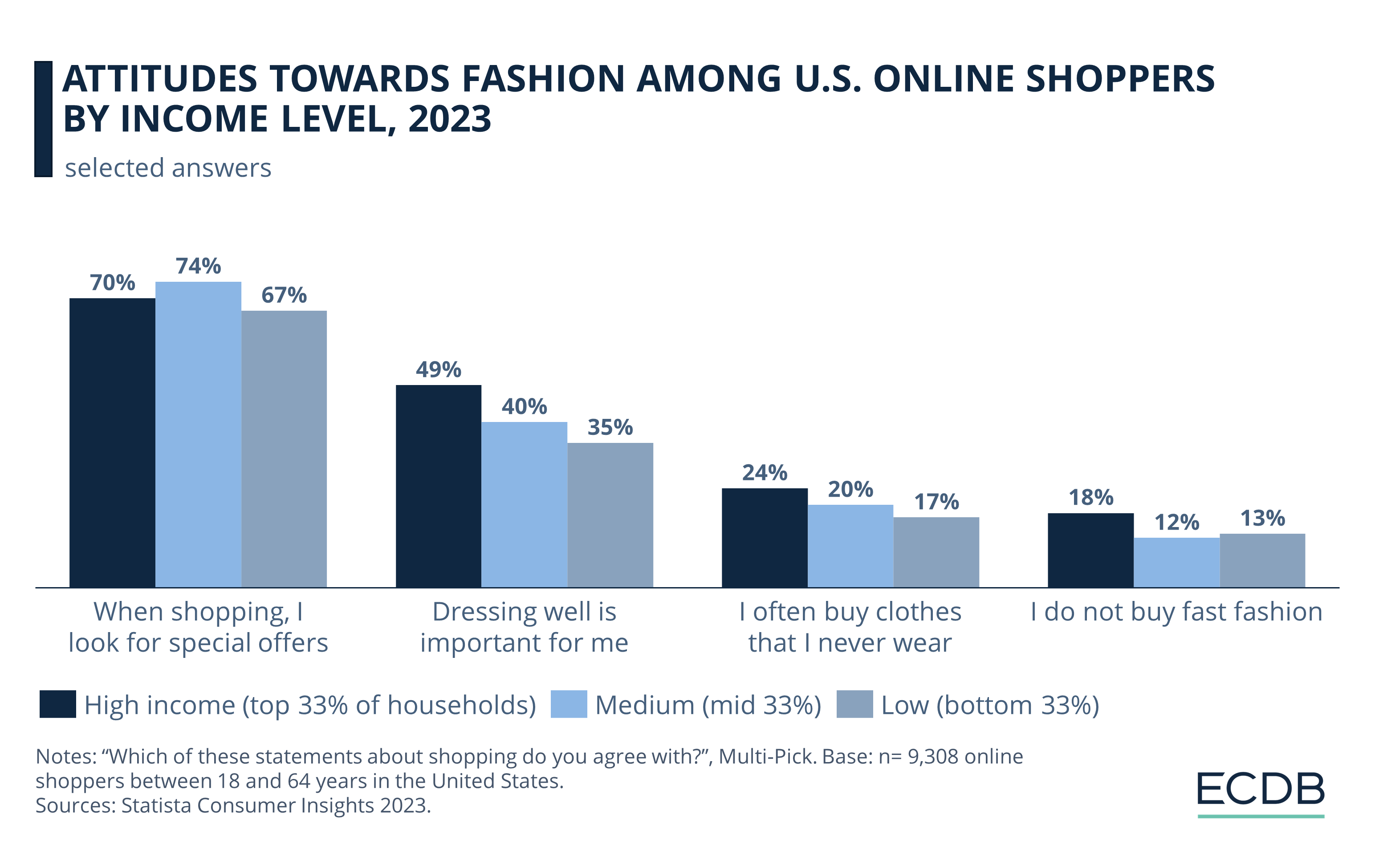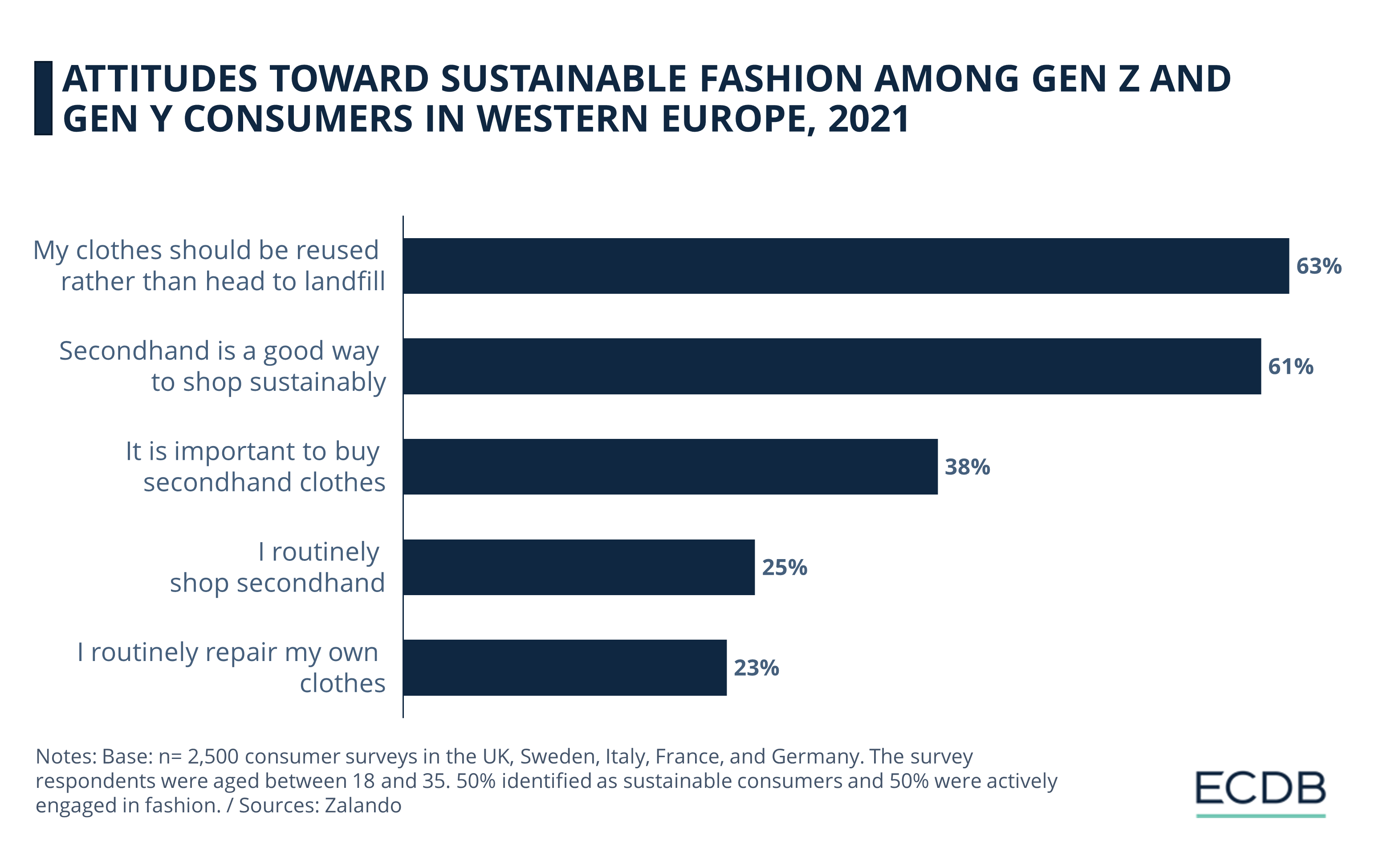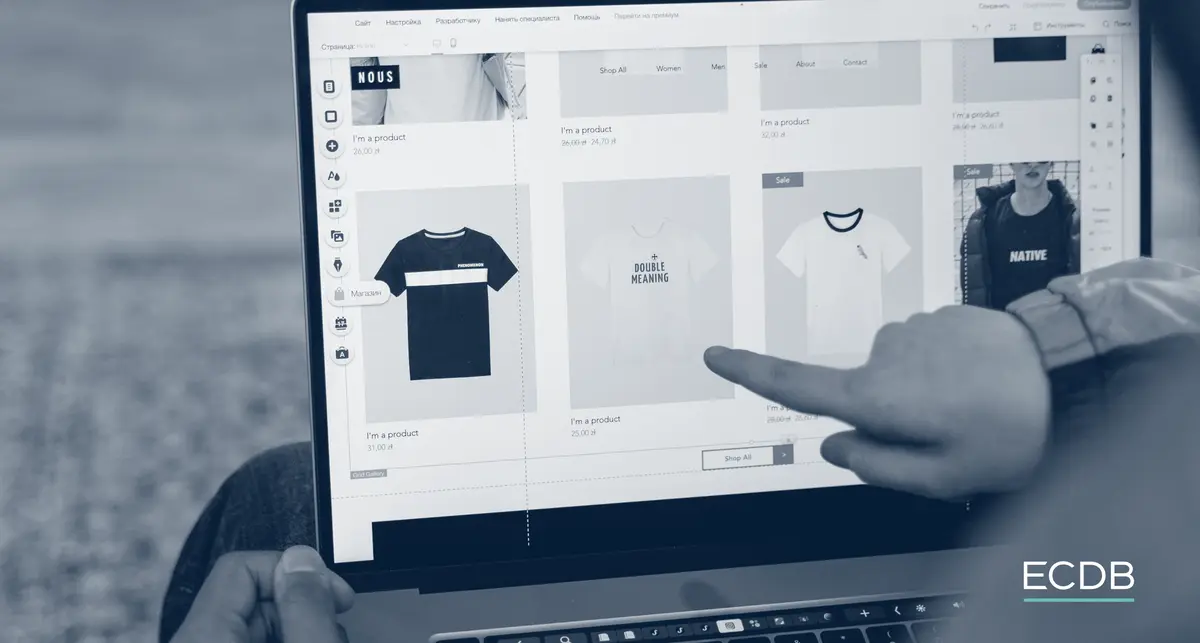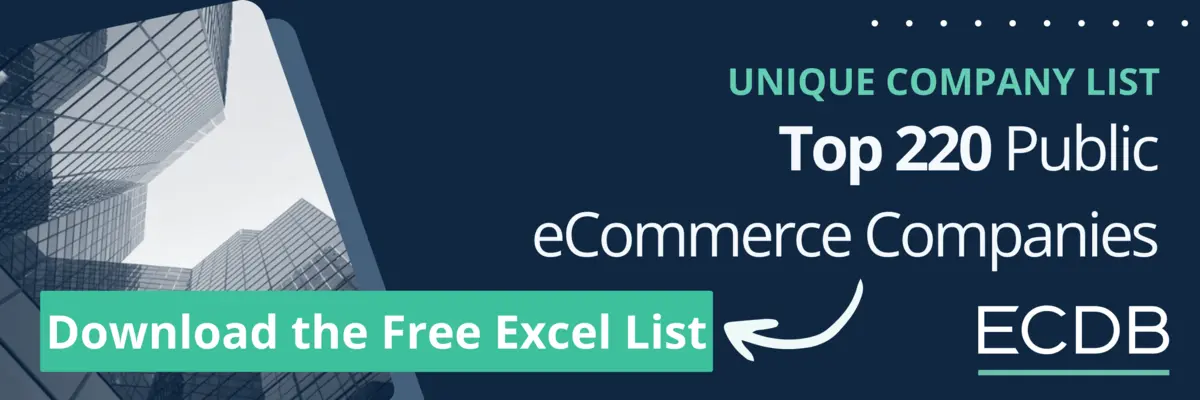eCommerce: Fashion Market
Fast Fashion Analysis: Fast Fashion Is Not Fair Fashion
Fashion and eCommerce are inextricably linked, as there are undeniable advantages to buying clothes online. Fast fashion and eCommerce are a particularly attractive combination, as online businesses can combine low-cost production with high-speed distribution. However, the drawbacks of fast fashion and its newer ultra-fast fashion competitors are becoming increasingly apparent.
Article by Nadine Koutsou-Wehling | February 29, 2024
The Fast Fashion Conundrum: Key Insights
Defining Fast Fashion: Fast fashion refers to clothing produced rapidly and inexpensively, aiming to minimize turnaround time and cost. Because fast fashion brands often draw designs from runway styles, this results in trend-driven products that are frequently replicated.
Pros and Cons: Fast fashion's benefits lie in its accessibility, catering to lower-income demographics, and its contribution to job creation in manufacturing. However, it also perpetuates a throaway mindset, poses ecological risks, and is associated with exploitative labor practices.
Offering Solutions: To mitigate the drawbacks of fast fashion while retaining its benefits, approaches include embracing ReCommerce practices, adopting innovative try-on methods to reduce returns, and implementing regulatory measures to safeguard human rights and environmental concerns within production processes.
Online fashion sales are integral to eCommerce worldwide, and despite challenges pertaining to the missing tactile experience, waste through high returns and uncertainties about sizing, consumers continue to buy fashion over the internet. Especially fast fashion products are in high demand, due to their low prices, trendy styles, and wide distribution.
The global online fashion market and fast fashion players are facing criticism, but not all is bad by default. Here is why.
What Is Fast Fashion?
Fast fashion, much like its culinary counterpart fast food, operates on a swift production cycle, aims for rapid consumption, but ultimately leaves all parties dissatisfied. Fast fashion refers to a modern, yet simple retail approach.
It emphasizes speed and low-cost production, allowing fashion trends to be swiftly translated from the runway to retail stores. Fast fashion brands often utilize cheap labor at the cost of human rights and environmental standards. This approach fosters a culture of excessive consumption, resulting in a disposable fashion culture with adverse environmental and social ramifications.
Despite this, fast fashion revenues are soaring, as evidenced by online retailer shein.com, which made US$36.5 billion in annual online revenues by 2023. Shein's main market is the United States, which accounts for about half of its sales.
Origins of Fast Fashion
The fast fashion approach is not new, but nowadays it has become an economic behemoth. Originated in Spain in the mid-20th century, Spanish entrepreneur Amancio Ortega Gaona popularized this method with his company Inditex in the early 1960s, positioning the fashion retailer Zara as one of the first and most famous brands to adopt this strategy.
Zara's ability to quickly introduce new clothes to the market after opening its store in New York in the 1990s left a lasting impression on other fashion brands. Combined with eCommerce, which further accelerated production speed, the fast fashion method attracted companies like Vans and Levi Strauss to adopt the model.
Since then, fast fashion has evolved in line with market conditions – it is faster; hence, technology and logistics have advanced to another level.
eCommerce: Fast Fashion Has Its Advantages
Despite the media's primary focus on the downsides of fast fashion, there are also benefits to making clothing affordable and accessible to a vast segment of the global population.
Cheaply produced garments can be sold at prices that even lower-income consumers can afford. The advent of eCommerce further enhances this accessibility. As the styles are attuned to current trends, it reduces the impact of classism among consumers, allowing them to participate in the latest fashion trends at prices that suit them financially. One example is the emergence of "quiet luxury" trends across social media and online fashion platforms. Paradoxically, this trend makes available a style that traditionally garnered appeal from its exclusivity.
Statista's 2023 consumer survey revealed that most respondents across all income categories in the U.S. look for special offers when shopping online.

Interestingly, the importance of dressing well increases with income, but still holds some significance for those in the bottom third income bracket, at 35%. Only a small percentage of high-income individuals completely avoid fast fashion (18%), with this percentage being even lower across all other income tiers.
Fast Fashion Creates Jobs, But...
One advantage of outsourcing labor to developing countries is that garment factories often offer safer job alternatives than farming or prostitution. China exemplifies a country that utilized cheap labor to significantly reduce its poverty rate between 1981 and 2010. Now, after decades of producing goods for the West, Chinese businesses are launching their own products, tailored to Western tastes. Shein serves as an example for this dynamic, with its heavy social media marketing and real-time demand monitoring model to redefine its production model as a form of "ultra-fast" fashion.
On the other hand, fast fashion's affordability often comes at the expense of garment industry workers, who work for wages below the poverty line. In many cases, safety conditions are insufficient, and allegations of child labor are not uncommon.
The market for garment factories is further said to be oversaturated, decreasing individual bargaining power, as brands can simply switch suppliers when problems arise. Moreover, the industry is known for copying designs from high-end and small enterprise businesses, which reduces the profit they make for the effort they put into creating styles.
Learn About ECDB Marketplace Profiles
The Age of eCommerce
Shein's successful business model, while not entirely novel or unique, has sparked renewed criticism of the trend for fast and disposable fashion. The company's staggering product variety, at 20 times that of competitors like H&M and Zara, brings the problems associated with this high-output model to light, notably its harmful environmental effects.
Fast Fashion is Bad for the Environment
From production to consumption, each step in the fashion supply chain presents environmental hazards with cumulative negative effects. Manufacturing clothes in large amounts results in higher water usage and pollution, particularly when it comes to dyeing and producing yarns and fibers.
If clothing is sold at prices that do not deter consumers from leaving items unworn and eventually discarding them, it can encourage a throwaway mindset, contributing to landfill problems. The Statista chart shown above reveals that never wearing bought clothing is common among 24% of high-income and 17% of low-income online shoppers in the U.S.
If a significant proportion of consumers are not wearing the clothing they purchase (like the chart suggests), it could hint at an oversaturation of the market or an unsustainable level of production. Especially when items are purchased at only a few dollars, never wearing the clothing may not feel like wasteful behavior as pieces are easily forgotten.
Another problem is that the return effort may not be worth the low cost of the items, making it more profitable for companies to throw away returned – and essentially unworn – products.
The Disconnect Between Production and Consumption
Although many consumers say they worry about the negative impact of their fast fashion consumption, the gap between their attitudes and behaviors persists, a phenomenon known as the "fashion paradox".
A Zalando survey conducted in 2021 highlights this divide. While a majority of users state their desire to avoid contributing to landfills and recognize the value of second-hand shopping, significantly fewer say they regularly shop second-hand (25%) or repair their clothing (23%).

Fast fashion retailers like Zara, H&M, Shein, Mango, Forever21, Topshop, Primark, and others leverage social media marketing to make their clothing appear more desirable and attainable, aided by influencers promoting their products.
This, combined with affordability, easy accessibility, and trendy designs, particularly appeals to young consumers or those in economically challenging situations, who may not be able to afford more sustainable options or believe such alternatives aren't fashionable enough.
Consumers Say: Fast Fashion Needs to Change Now
Research suggests that consumers are generally skeptical of sustainable business practices due to numerous instances of companies adopting faux-sustainable attitudes for profit while maintaining the status quo. However, businesses can genuinely embrace this new way of thinking to avoid negative publicity and build trust with a broader customer base. Here is how:
Offer Sustainable Options at Competitive Prices: For a business to be environmentally sustainable, it must operate without contributing to the long-term depletion of natural resources. This can be achieved by using biodegradable fabrics and providing clear and simple explanations to customers about what fabric descriptions entail. Product labels that succinctly indicate the level of water and carbon usage during production, as well as the recyclability of products, allow consumers to make informed choices about their purchases.
Reducing Waste by Improving Packaging and Engaging in ReCommerce: ReCommerce, especially popular among young consumers, is a sustainable alternative to sending cheap, barely used or items in good condition to landfills, which often happens for cost reasons. Brands can bolster their image by participating in the circular economy through initiatives like enhancing packaging for easy product returns and offering repair services. These steps not only reduce waste but also mitigate the issue of purchased items never being worn.
Leveraging Technological Innovations to Reduce Returns: With advancements like AR and VR technology, customers can now have a virtual try-on, helping to counter some of the drawbacks of eCommerce that may leave them dissatisfied with their purchases.
Ensuring Ethical Labor Practices and Protecting Design Originality: Ethical labor conditions include fair wages and safe working conditions across the supply chain. Maintaining transparency about these production processes not only reinforces consumer trust, but also conveys the company’s commitment to ethical standards. Moreover, engaging with emerging talents from small and medium enterprises (SMEs) not only encourages design originality but also provides a platform for unique styles.
ReCommerce Is Better Than Fast Fashion
Fast fashion is a hot topic that was recently reignited by the emergence of ultra-fast fashion brands which brought the strategy of relaying customer demand to production facilities to an entirely new level, outperforming established brands in terms of quantity and price.
Although fast fashion has its upsides, such as enhanced efficiency of production capabilities and offering up-to-date fashion trends at affordable prices to everyone, there are significant drawbacks to this business model that outweigh the positives.
Businesses can address the environmental and ethical problems of the fashion industry by using recyclable and biodegradable materials, adopt a ReCommerce strategy, and support regulatory moves toward the ethical trading with garment factories in developing countries. The EU currently discusses a possible supply chain law, the CSDD (Corporate Sustainability Due Diligence Directive), which may further improve conditions in the long run.

Online Fast Fashion: Closing Remarks
A discussion of fast fashion in eCommerce illustrates the two opposing sides of this business model and how difficult it is to reconcile them. While consumers cannot afford to or do not want to spend large sums of money on clothing, it is beneficial that fast fashion makes stylish clothing available to everyone.
Fast fashion factories also help provide work for people who would otherwise be employed under worse conditions. But low profit margins and power imbalances between manufacturers and buyers show that workers and the environment still suffer.
Recent developments, such as last year's legislative proposal for an EU supply chain law, offer hope for better conditions by legally obliging companies to choose the ethical alternative over the cheap one. But how feasible is its implementation? It is safe to say that companies can already do their part to improve the situation in garment manufacturing, as many are doing, but ultimately it is up to a collective effort to shift the market towards more sustainable practices.
Related insights
Article
Zara Statistics: Global Online Sales, Store Count Worldwide & Total Revenue
Zara Statistics: Global Online Sales, Store Count Worldwide & Total Revenue
Article
Zalando, Otto & About You: Revenue, Market Growth, Business Strategies
Zalando, Otto & About You: Revenue, Market Growth, Business Strategies
Article
Is Temu a Threat to Amazon, Zalando & Otto?
Is Temu a Threat to Amazon, Zalando & Otto?
Article
Fast Fashion is Changing eCommerce in Europe
Fast Fashion is Changing eCommerce in Europe
Article
Birkenstock Business Model: eCommerce Sales, Market Dynamics & Trends
Birkenstock Business Model: eCommerce Sales, Market Dynamics & Trends
Back to main topics
